Current Affairs 28 Sep 2023
Today’s News
Drawing the line: Information aids public safety, and is not a trigger for panic
(Current Affairs 28 Sep 2023 |Relevant for GS paper-3,Disaster Management)
- The year began on a calamitous note with reports that the temple town of Joshimath in the Chamoli district of Uttarakhand was ‘sinking’ and that cracks had appeared on residential and commercial structures.
- This prompted a humanitarian crisis with people fleeing and taking refuge in tents and open spaces, fearing that their homes would crumble. A proximate reason for the acceleration in the fissures and cracks was attributed to tunnelling activities from the Tapovan Vishnugadpower project being developed by the National Thermal Power Corporation.
- There were also concerns on whether groundwater depletion, or increased urbanisation that encouraged faulty construction, had reached a point from which disasters had become inevitable.
- Surprisingly, it banned the public dissemination of information from scientists involved with the institutions on the grounds that satellite imagery pictures — from Indian and international sources — of the subsurface in Uttarakhand were aggravating “panic” and that information was to be shared only after it was “cleared” by the Centre.
- The net result of this is that despite reports of all institutions being available for months, it took a strong rebuke from the High Court of Uttarakhand last week for the State authorities to make this information public.
- Though these reports are technical, they reiterate what has been known about the risks underlying infrastructure development in Uttarakhand. The Central Building Research Institute, Roorkee, for instance, pointed out that 99% of construction in the region did not comply with the mandatory building codes.
- The National Institute of Hydrology, Roorkee, in its report, said that the network of springs, drainage systems and areas of subsidence may influence land subsidence and there was a need to monitor them. Overall, the tenuous geology made city-like infrastructure projects risky and strict town-planning and construction measures were necessary to minimise the risk from accidents and a loss of lives.
- A necessary step is in ensuring that information on the risks is widely disseminated and communicated in a way that it becomes a part and parcel of public life.
- Independent scientific counsel must form the backbone of policymaking and clear lines must be drawn around the limits to development in the region.
Refresh Basics
Joshimath
- Joshimath is a hilly town located on the Rishikesh-Badrinath National Highway (NH-7) in Chamoli district of Uttarakhand.
- The city serves as a tourist town as it acts as an overnight rest stop for people visiting Badrinath, Auli, Valley of Flowers, and Hemkund Sahib, among other important religious and tourist locations in the state.
- Joshimath is also of great strategic importance to the Indian armed forces and is home to one of the Army’s most important cantonments.
- The town (falls in high-risk seismic Zone-V) is traversed by running streams with a high gradient from Vishnuprayag, a confluence of the Dhauliganga and the Alaknanda rivers.
- It is home to one of the four cardinal Maths or monasteries established by Adi Shankara – Sringeri in Karnataka, Dwarka in Gujarat, Puri in Odisha and Joshimath near Badrinath in Uttarakhand.
Landslide
- A landslide is defined as the movement of a mass of rock, debris, or earth down a slope.
- They are a type of mass wasting, which denotes any downward movement of soil and rock under the direct influence of gravity.
- The term landslide encompasses five modes of slope movement: falls, topples, slides, spreads, and flows.
Timeless quest: Bennu sample can help human understanding beyond the immediate
(Current Affairs 28 Sep 2023 | Relevant for GS paper-3, Science and tech, Prelims)

- On September 24, NASA’s OSIRIS¬REx spacecraft dropped off a capsule over the earth, leaving it to be pulled down by the planet’s gravity. It then deployed parachutes and gently landed in Utah in the U.S., where experts waited to retrieve its invaluable contents: around 250 grams of rocks and dust that OSIRIS¬REx had collected from the surface of 101955 Bennu.
- Bennu is an asteroid orbiting the sun (with a period of 436 days) such that it comes relatively close to the earth once every six years or so. It is a carbonaceous asteroid with characteristics that suggest it settled into its present form and composition within 10 million years after the solar system’s formation, surviving the last 4.5 billion years nearly intact.
- Such ‘leftover’ pieces of debris are expected to reveal the system’s ingredients and the signatures of the processes that combined them in different ways. Many scientists also believe that when rocks such as Bennu crashed into the earth, they delivered the compounds required for the formation of life.
- NASA launched OSIRIS-REx (Origins, Spectral Interpretation, Resource Identification, Security-Regolith Explorer) in 2016. Two years later, scientists worked to place it into orbit around Bennu, at an altitude of just 2 km. Bennu itself was zipping through space at 28 km/s.
- On October 20, 2020, OSIRIS¬REx landed just long enough to grab a sample of the asteroid from a pre-identified spot before flying back up. In May 2021, it began its long journey back to earth, where it dropped off the capsule holding Bennu’s regolith. After this, it will reincarnate in its OSIRIS-APEX avatar, to rendezvous with the silica rich asteroid 99942 Apophis in 2029.
- The OSIRIS mission has two identities. In time,it works alongside Japan’s two Hayabusa missions, which have collected and returned samples of 25143 Itokawa and 162173 Ryugu, to expand our knowledge of the solar system’s historyOSIRIS is NASA’s third element of its ‘New Frontiers’ programme, after New Horizons (to explore the Kuiper Belt)and Juno (to study the planet exerting the largest gravitti-onal influence in the solar system).With OSIRIS’s capsule, humankind virtually gets to hold infinity in the palm of the hand.
Refresh Basics
OSIRIS-REx Mission:
- It is the United States’ first asteroid sample return mission, aiming to collect and carry a pristine, unaltered sample from an asteroid back to earth for scientific study.
- The OSIRIS-REx (Origins, Spectral Interpretation, Resource Identification, Security, Regolith Explorer) spacecraft was launched in 2016 for the journey to Bennu.
- The mission is essentially a seven-year-long voyage and will conclude when at least 60 grams of samples are delivered back to the Earth (in 2023).
- As per the National Aeronautics and Space Administration (NASA), the mission promises to bring the largest amount of extraterrestrial material back to the Earth since the Apollo era.
- Apollo was the NASA program that resulted in American astronauts’ making a total of 11 space flights and walking on the moon (1968-72).
- The spacecraft contains five instruments meant to explore Bennu including cameras, a spectrometer and a laser altimeter.
- Recently, the spacecraft’s robotic arm called the Touch-And-Go Sample Acquisition Mechanism (TAGSAM), made an attempt to “TAG” the asteroid at a sample site and collected a sample.
Significance:
- Scientists will use the asteroid samples to study the formation of the solar system and of habitable planets such as Earth.
- NASA will also distribute a part of the samples to laboratories worldwide and will reserve about 75% of the samples for future generations who can study it with technologies not yet created.
Asteroid Bennu:
- Bennu is an ancient asteroid, currently more than 200 million miles from Earth.
- It is about as tall as the Empire State Building (US) and is named after an Egyptian deity.
- The asteroid was discovered by a team from the NASA-funded Lincoln Near-Earth Asteroid Research team in 1999.
- It is known that this asteroid is a B-type asteroid, implying that it contains significant amounts of carbon and various other minerals.
- Because of its high carbon content, it reflects about 4% of the light that hits it, which is very low when compared with a planet like Venus, which reflects about 65% of the light that hits it. Earth reflects about 30%.
- Around 20-40% of Bennu’s interior is empty space and scientists believe that it was formed in the first 10 million years of the solar system’s formation, implying that it is roughly 4.5 billion years old.
- There is a slight possibility that Bennu, which is classified as a Near Earth Object (NEO), might strike the Earth in the next century, between the years 2175 and 2199.
- NEOs are comets and asteroids nudged by the gravitational attraction of nearby planets into orbits which allows them to enter the Earth’s neighborhood.
- Bennu is believed to have been born in the Main Asteroid belt between Mars and Jupiter and because of gravitational tugs from other celestial objects and the slight push asteroids get when they release absorbed sunlight, the asteroid is coming closer to Earth.
- Bennu offers scientists a window into the early solar system as it was first taking shape billions of years ago and tossing ingredients that could have helped seed life on Earth.
- Significantly, Bennu hasn’t undergone drastic changes since its formation over billions of years ago and therefore it contains chemicals and rocks dating back to the birth of the solar system. It is also relatively close to the Earth.
What is asteroid?
- These are rocky objects that orbit the Sun, much smaller than planets. They are also called minor planets.
- According to NASA, 9,94,383 is the count of known asteroids, the remnants from the formation of the solar system over 4.6 billion years ago.
Asteroids are divided into three classes:
- First, those found in the main asteroid belt between Mars and Jupiter, which is estimated to contain somewhere between 1.1-1.9 million asteroids.
- The second group is that of Trojans, which are asteroids that share an orbit with a larger planet.
- The third classification is Near-Earth Asteroids (NEA), which have orbits that pass close by the Earth. Those that cross the Earth’s orbit are called Earth-crossers.
- More than 10,000 such asteroids are known, out of which over 1,400 are classified as Potentially Hazardous Asteroids (PHAs).
- PHAs are currently defined based on parameters that measure the asteroid’s potential to make threatening close approaches to the Earth.
- Specifically, all asteroids with an Earth Minimum Orbit Intersection Distance (MOID) of 0.05 au or less and an absolute magnitude (H) of 22.0 or less are considered PHAs..
Why are tigers dying in Nilgiris district?
(Current Affairs 28 Sep 2023 |Relevant for Prelims, GS paper-3, environment)
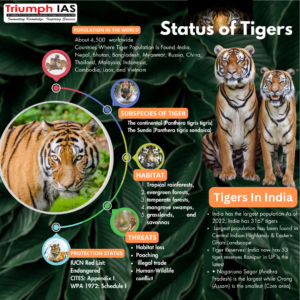
- A total of 10 tigers (six cubs and four adults) have died in the Nilgiris since the middle of August. The six tiger cubs died in two separate incidents, while the four adult tigers died in four separate events, with at least one suspected to have been poisoned.
- The first reported tiger deaths occurred on August 16 in the buffer zone of the Mudumalai Tiger Reserve (MTR) in Siriyur. After conducting a post mortem on the remains, forest department officials said that they suspect that the cubs, believed to be only two weeks old, could have died due to starvation or umbilical infection.
- The second death was of an adult tigress in the Naduvattam Range in the Nilgiris forest division on August 17, with officials suspecting that the tigress died due to injuries after fighting with another animal.
- In February this year, the forest department arrested four poachers from Rajasthan who had allegedly poached a tiger in the areas surrounding Emerald Dam near Avalanche, a few kilometers away from where the two tigers were found dead.
- One of the theories put forward by senior forest department officials is that the high density of tigers in the Mudumalai¬ Bandipur ¬Nagarhole complex of the Nilgiri Biosphere Reserve is pushing populations into the surrounding habitats in the Mukurthi National Park, Nilgiris and Gudalur forest divisions.
- This leads to increased competition between animals and more fighting, resulting in more deaths. According to Nilgiris Division’s District Forest Officer, S. Gotham, the division is now home to 54 tigers, a significant population.
- Conservationists worry that this increase in population could lead to more negative human animal interactions in the near future.
Refresh Basics
Tigers
- Scientific Name: Panthera tigris
- Indian Sub Species: Panthera tigris tigris.
Habitat:
- Its habitat stretches from Siberian temperate forests to subtropical and tropical forests on the Indian subcontinent and Sumatra.
- It is the largest cat species and a member of the genus Panthera.
- Traditionally eight subspecies of tigers have been recognized, out of which three are extinct.
- Bengal Tigers: Indian Subcontinent
- Caspian tiger: Turkey through central and west Asia (extinct).
- Amur tiger: Amur Rivers region of Russia and China, and North Korea
- Javan tiger: Java, Indonesia (extinct).
- South China tiger: South central China.
- Bali tiger: Bali, Indonesia (extinct).
- Sumatran tiger: Sumatra, Indonesia.
- Indo-Chinese tiger: Continental south-east Asia.
Threats:
Habitat destruction, habitat fragmentation and poaching.
Protection Status:
- Indian Wildlife (Protection) Act, 1972: Schedule I
- International Union for Conservation of Nature (IUCN) Red List: Endangered.
- Convention on International Trade in Endangered Species of Wild Fauna and Flora (CITES): Appendix I.
- Tiger Reserves in India
- Total Number: 53 according to NTCA.
- Largest: Nagarjunsagar Srisailam Tiger Reserve, Andhra Pradesh on the basis of core area.
- Smallest: Orang tiger reserve in Assam on the basis of core area.
Recently , according to 5th cycle of India’s Tiger Census 2022, revealing 6.7% in the increase in the past four years.
NIA holds searches in six States, detains several over ‘terror links’
(Current Affairs 28 Sep 2023 |Relevant for Prelims)
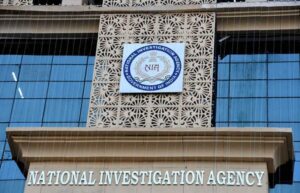
- The National Investigation Agency on Wednesday detained several suspects during searches across six States and one Union Territory as part of a crackdown on the alleged nexus among terrorists, gangsters and drug smugglers linked to a Canada -based “listed terrorist”, Arshdeep Singh Gill, alias Arsh Dalla, and other gangsters.
- The searches started in the early hours with the assistance of the local police. The NIA teams zeroed in on 53 locations, from where pistols, ammunition and a large number of digital devices were seized.
- The searches were also conducted in Rohtak, Sirsa, Fatehabad and Faridabad in Haryana; Sri Ganga Nagar, Jhunjhunu, Hanumangarh and Jodhpur in Rajasthan; Gorakhpur in Uttar Pradesh; Dehradunand Udhamsingh Nagar in Uttarakhand; in and around Delhi; and Chandigarh.
Refresh to Basics
National investigating agency
The NIA is the Central Counter-Terrorism Law Enforcement Agency of India mandated to investigate all the offences affecting the sovereignty, security and integrity of India. It includes:
- Friendly relations with foreign states.
- Against atomic and nuclear facilities.
- Smuggling of arms, drugs and fake Indian currency and infiltration from across the borders.
- The offences under the statutory laws enacted to implement international treaties, agreements, conventions and resolutions of the United Nations, its agencies and other international organisations.
It was constituted under the National Investigation Agency (NIA) Act, 2008.
The agency is empowered to deal with the investigation of terror related crimes across states without special permission from the states under written proclamation from the Ministry of Home Affairs.
Headquarters: New Delhi
Origin:
- In the wake of the 26/11 Mumbai terror attack in November 2008, which shocked the entire world, the then United Progressive Alliance government decided to establish the NIA.
- In December 2008, former Union Home Minister P. Chidambaram introduced the National Investigation Agency Bill.
- The agency came into existence on 31st December 2008, and started its functioning in 2009. Till date, the NIA has registered 447 cases.
Jurisdiction:
- The law under which the agency operates extends to the whole of India and also applies to Indian citizens outside the country.
- Persons in the service of the government wherever they are posted.
- Persons on ships and aircraft registered in India wherever they may be.
- Persons who commit a scheduled offence beyond India against the Indian citizen or affecting the interest of India.
DNA Nanoball Strategy
(Current Affairs 28 Sep 2023 |Relevant for Prelims)

- In a remarkable scientific development, the Deoxyribonucleic Acid (DNA) nanoball strategy has emerged as a groundbreaking, cost-effective technology for the rapid detection of pathogens in the field.
- Pathogens are microorganisms that can cause disease in their host. They can be viruses, bacteria, protozoans, or fungi.
- The DNA nanoball strategy combines nucleic acids-based diagnostics and loop-mediated isothermal amplification (LAMP) technology for rapid pathogen detection.
- LAMP is a process that amplifies circular DNA molecules into long strands that contain multiple copies of DNA. These strands then fold into spherical structures called DNA nanoballs, which can be easily observed by a microscope or an electrical device.
- The design does not need laboratory techniques to support diagnosis. It is a low-cost technology that can be widely deployed and scalable.
Vibrio Vulnificus
(Current Affairs 28 Sep 2023 |Relevant for Prelims)

In recent years, India has been grappling with a growing concern related to Vibrio vulnificus infections, a deadly bacteria found in marine environments.
Vibrio vulnificus is a bacterium that can cause severe infections in humans. It can result from eating undercooked seafood, especially oysters, which may contain the bacteria.
Carriers:
- It is typically contracted through two main routes: consuming infected raw shellfish and exposing wounds to contaminated waters.
- It spreads through marine organisms like fish like eel, derbio, tilapia, trout, and shrimp.
- The first case in marine organisms was documented in Japanese eel in 1975. The first case of V vulnificus in humans was recorded in 1976 in the US.
- The pathogen arrived in Spain through imported eels in 1985.
- In 2018, India documented an outbreak of V vulnificus in a tilapia farm in Kerala.
- Originally from Africa and West Asia, tilapia is one of the most traded food fish globally.
Symptoms:
- Symptoms of V. vulnificus infection include diarrhea, vomiting, fever, and, in severe cases, flesh-eating diseases that can be fatal within days.
- Environmental Factors Favoring V. vulnificus in India:
- This bacterium thrives in warm waters above 20°C. India’s average sea surface temperature of 28°C provides a perfect habitat.
- Climate change, with increased rainfall and reduced coastal salinity, further supports the growth of V. vulnificus.
Consequences:
- V. vulnificus infections have a high mortality rate, ranging from 15% to 50%, even with prompt diagnosis and treatment.
- Vulnerable populations, such as those with chronic liver disease, cancer, chronic kidney disease, and diabetes, are at increased risk.
- Infections can lead to limb amputations ( surgical removal of part of the body, such as an arm or leg), making them a significant health concern.
Related Blogs…
 |
 |
GS Related Practices Question…
To master these intricacies and fare well in the Sociology Optional Syllabus, aspiring sociologists might benefit from guidance by the Best Sociology Optional Teacher and participation in the Best Sociology Optional Coaching. These avenues provide comprehensive assistance, ensuring a solid understanding of sociology’s diverse methodologies and techniques.
Current affairs 28 September 2023, Current affairs 27 September 2023,Today news, Today news GS, Today news upsc, Today news and views, Today news 2023, Today news Current affairs September 2023, Current affairs news, Current affairs book pdf, Current affairs best blog, Current affairs for UPSC, Current affairs 2023, Current affairs contact, Current affairs book, Current affairs program meaning

Choose The Best Sociology Optional Teacher for IAS Preparation?
At the beginning of the journey for Civil Services Examination preparation, many students face a pivotal decision – selecting their optional subject. Questions such as “which optional subject is the best?” and “which optional subject is the most scoring?” frequently come to mind. Choosing the right optional subject, like choosing the best sociology optional teacher, is a subjective yet vital step that requires a thoughtful decision based on facts. A misstep in this crucial decision can indeed prove disastrous.
Ever since the exam pattern was revamped in 2013, the UPSC has eliminated the need for a second optional subject. Now, candidates have to choose only one optional subject for the UPSC Mains, which has two papers of 250 marks each. One of the compelling choices for many has been the sociology optional. However, it’s strongly advised to decide on your optional subject for mains well ahead of time to get sufficient time to complete the syllabus. After all, most students score similarly in General Studies Papers; it’s the score in the optional subject & essay that contributes significantly to the final selection.
“A sound strategy does not rely solely on the popular
Opinion of toppers or famous YouTubers cum teachers.”
It requires understanding one’s ability, interest, and the relevance of the subject, not just for the exam but also for life in general. Hence, when selecting the best sociology teacher, one must consider the usefulness of sociology optional coaching in General Studies, Essay, and Personality Test.
The choice of the optional subject should be based on objective criteria, such as the nature, scope, and size of the syllabus, uniformity and stability in the question pattern, relevance of the syllabic content in daily life in society, and the availability of study material and guidance. For example, choosing the best sociology optional coaching can ensure access to top-quality study materials and experienced teachers. Always remember, the approach of the UPSC optional subject differs from your academic studies of subjects. Therefore, before settling for sociology optional, you need to analyze the syllabus, previous years’ pattern, subject requirements (be it ideal, visionary, numerical, conceptual theoretical), and your comfort level with the subject.
This decision marks a critical point in your UPSC – CSE journey, potentially determining your success in a career in IAS/Civil Services. Therefore, it’s crucial to choose wisely, whether it’s the optional subject or the best sociology optional teacher. Always base your decision on accurate facts, and never let your emotional biases guide your choices. After all, the search for the best sociology optional coaching is about finding the perfect fit for your unique academic needs and aspirations.
To master these intricacies and fare well in the Sociology Optional Syllabus, aspiring sociologists might benefit from guidance by the Best Sociology Optional Teacher and participation in the Best Sociology Optional Coaching. These avenues provide comprehensive assistance, ensuring a solid understanding of sociology’s diverse methodologies and techniques. Sociology, Social theory, Best Sociology Optional Teacher, Best Sociology Optional Coaching, Sociology Optional Syllabus.
Best Sociology Optional Teacher, Sociology Syllabus, Sociology Optional, Sociology Optional Coaching, Best Sociology Optional Coaching, Best Sociology Teacher, Sociology Course, Sociology Teacher, Sociology Foundation, Sociology Foundation Course, Sociology Optional UPSC, Sociology for IAS,
Follow us :


https://t.me/VikashRanjanSociology
Find More Blogs
|
Scope of the subject and comparison with other social sciences |
|||
|
|
|
|
Modernity and social changes in Europe |


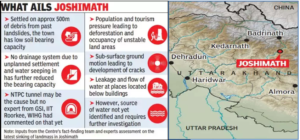
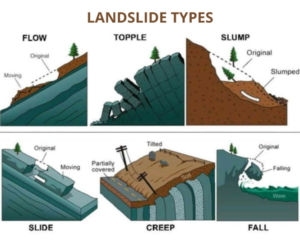

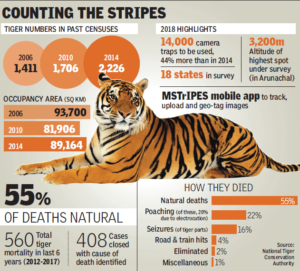



2 comments